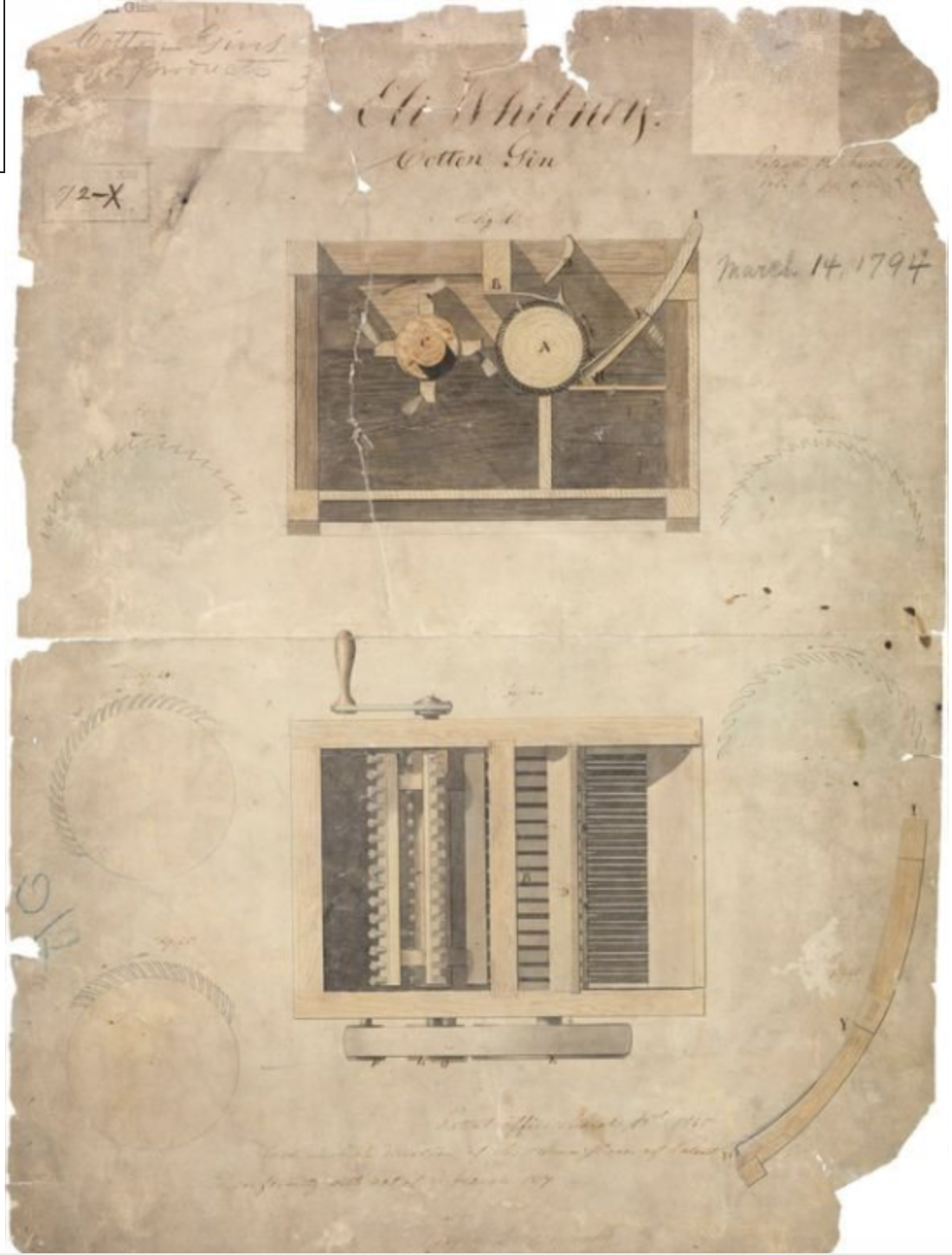The first image is of the original patent for the machine that changed the market for enslaved labor completely, the cotton gin. Eli Whitney invented the time-saving machine with the tedious purpose of removing seeds found in cotton balls. The submission of these drawings on June 20, 1793, enabled the market to grow significantly. This in turn leads to the increase of demand for slave workers. As we see in the rest of the pictures, with the increase of demand, the increase of rescuing and transporting slaves was the consequential effect of this cause. In the second picture, we see a group of fugitives fleeing from the Maryland coast to an Underground Railroad depot in Delaware, heading towards the freedom they truly deserved. Locations that were found in Delaware included the Appoquinimink Friends Meeting House~Odessa, Friends Meeting House~Wilmington, and New Castle County Courthouse~New Castle. In order to maintain the secrecy needed for this type of informal organization, the conductors we're only informed of the shortstops that they led fugitives to. There were no known conductors that knew the entirety of the map of the Underground Railroad. The next few images were found from multiple different sources, but they all hold a significant meaning because they are representations of the actuality of the occurrences in the Underground Railroad.
Works Cited:
Black, Alexander. The Story of Ohio. Nabu Press, 2012.
Goodheart, Adam. “The Secret History of the Underground Railroad.” The Atlantic, Atlantic Media Company, 17 Feb. 2015, www.theatlantic.com/magazine/archive/2015/03/the-secret-history-of-the-….
“List of Sites for the Underground Railroad Travel Itinerary.” National Parks Service, U.S. Department of the Interior, www.nps.gov/nr/travel/underground/states.htm.
“Media.” Encyclopediavirginia.org, www.encyclopediavirginia.org/media_player?mets_filename=evr10523mets.xml.




